The relevant formulas from OSRAM AN090 "Eye safety of IREDs used in lamp applications" with slight modifications :
$$ Z = (l + w)/2 $$ $$ \alpha = Z/d $$ $$ L_{ir} \approx \frac{I_e R(\lambda)}{Z^2} $$ $$ L_{ir} < 6000/\alpha \hspace{0.3cm} W/m^2/sr $$ $$ or $$ $$ L_{ir} < 6/\alpha \hspace{0.3cm} mW/mm^2/sr $$
And a table for the subtense limits
| Time range | \$\alpha_{min,eff},\gamma_{FOV,min}\$ | \$\alpha_{max,eff},\gamma_{FOV,max}\$ |
|---|---|---|
| t \$\le\$ 0.25 s | 0.0017 rad | 0.1 rad |
| 0.25 s \$\lt\$ t \$\lt\$ 10 s | \$0.0017\sqrt{\frac{t}{0.25}} \$ rad | 0.1 rad |
| t \$\ge\$ 10 s | 0.011 rad | 0.1 rad |
Consider three ficticious LEDs at a distance of 20cm. All have the same \$I_e\$, but with different die sizes: Z=0.3m, Z=3mm, Z=30mm.
Subtend angles:
$$ \alpha_1 = 0.3/200 = 0.0015 $$ $$ \alpha_2 = 3/200 = 0.015 $$ $$ \alpha_3 = 30/200 = 0.15 $$
As I understand it, applying the table for t > 10s:
$$ \alpha_{1,eff} = 0.011 $$ $$ \alpha_{2,eff} = 0.015 $$ $$ \alpha_{3,eff} = 0.1 $$
If \$I_e\$ and \$R(\lambda)\$ are constant then the radiance:
$$ L_{ir} \propto \frac{1}{Z^2} $$
And that makes sense to me because the same "power" is spread out over a larger area.
If we then compute the \$L_{ir}\$ limit for the different subtend angles:
$$ L_{ir,1} < \frac{6}{\alpha_{1,eff}} = \frac{6}{0.011} = 545 ~ mW/mm^2/sr$$ $$ L_{ir,2} < \frac{6}{\alpha_{2,eff}} = \frac{6}{0.011} = 400 ~ mW/mm^2/sr$$ $$ L_{ir,3} < \frac{6}{\alpha_{3,eff}} = \frac{6}{0.1} = 60 ~ mW/mm^2/sr$$
As the subtend angle gets bigger, the image becomes larger on the retina. However, the limit allows more power (flux?) with smaller images.
This seems counter intuitive since \$L_{ir}\$ feels like a measure of "density". What's really going on?
Specifically, since \$I_e\$ is the same in all cases, the larger die will project a "less dense" image on the retina so I would think the allowed limit would be higher to account for distributing the heating over more area on the retina. But that's clearly not how it works.
There is another related question concerning arrays of IR LEDs. In this answer, the minimum subtend angle, \$\alpha_{min,eff}\$, is taken to be the minimum spacing between array elements. Is this correct? I haven't seen this documented anywhere.
The total heating effect of the array should be similar to the "less dense" image from a larger die. I would think that large die vs array of small dies should have similar limits when properly accounted for. However, an array of small dies will have a limit of \$ 545 ~ mW/mm^2/sr \$ for each element and really large die will have a limit of only \$ 60 ~ mW/mm^2/sr \$. It obviously doesn't work this way, but if both of those numbers were multiplied by the same amount of steradians, the resulting flux will be higher for the array LED. What am I missing?
I'm trying to understand if common CCTV IR LED rings, using 5mm LEDs, are safe for long exposures at shorter distances. Or if I need to build my own array with large die IR LEDs appropriately spaced. The application is motion capture facing at the IR LEDs.
Update
I created this drawing to hopefully show my confusion a little better. First some assumptions.
the subtend angle per IEC 62471 is with respect to the outside of the eye. The angle would be different inside the eye.
area is not important in and of itself.
The drawing is not to scale and depicts a single emitting surface of \$ 0.1 ~ sr \$ in red. I gave it a radiance of \$ 60 ~ mW/mm^2/sr \$. There is a green section meant to respresent a subsampling of \$ 0.01 ~ sr \$ of the same emitter surface.
The irradiance is probably not important, but I'd like to know if it works the way I've indicated.
One could also interpret the drawing to show a 'large' array where the subsample is a smaller die within an array.
This is the crux of the problem for me. A small subtend angle, say from a single die, has a higher radiance limit. Building a 'large' array like this would result in a radiance far higher than allowed for the larger subtend angle.
This obviously can't be so what have I got wrong?
